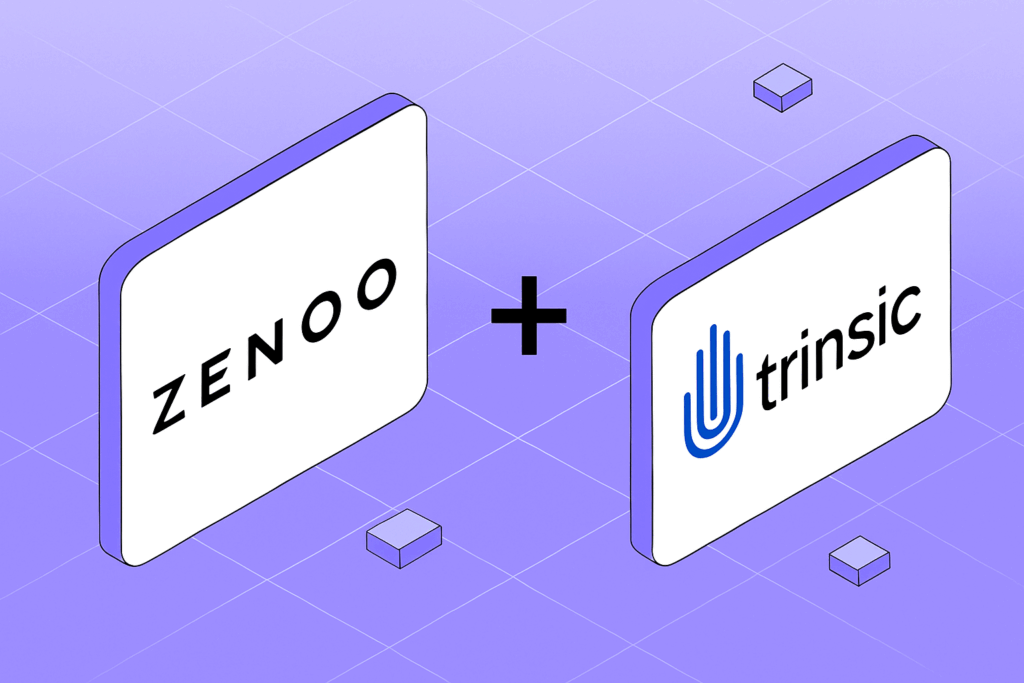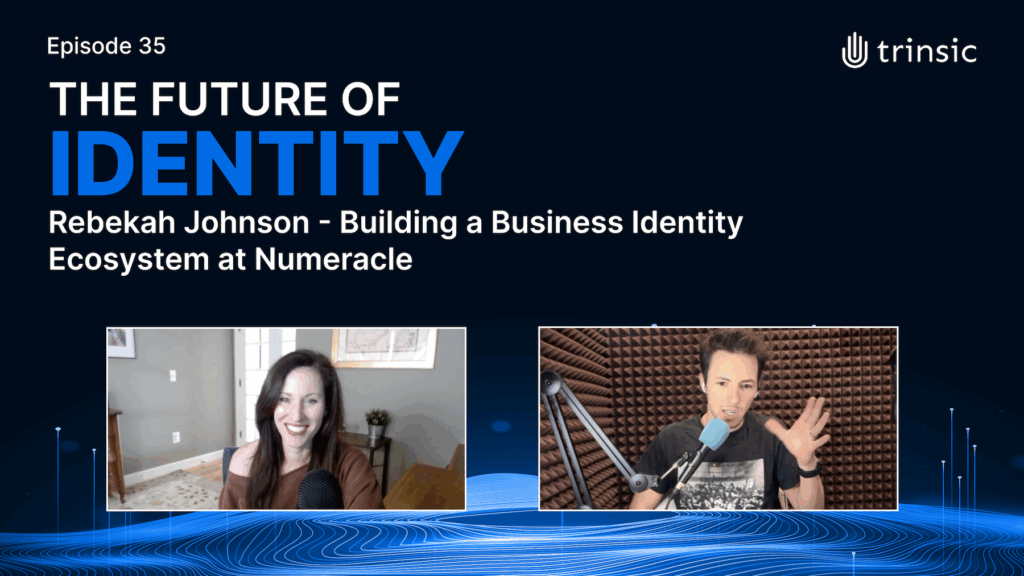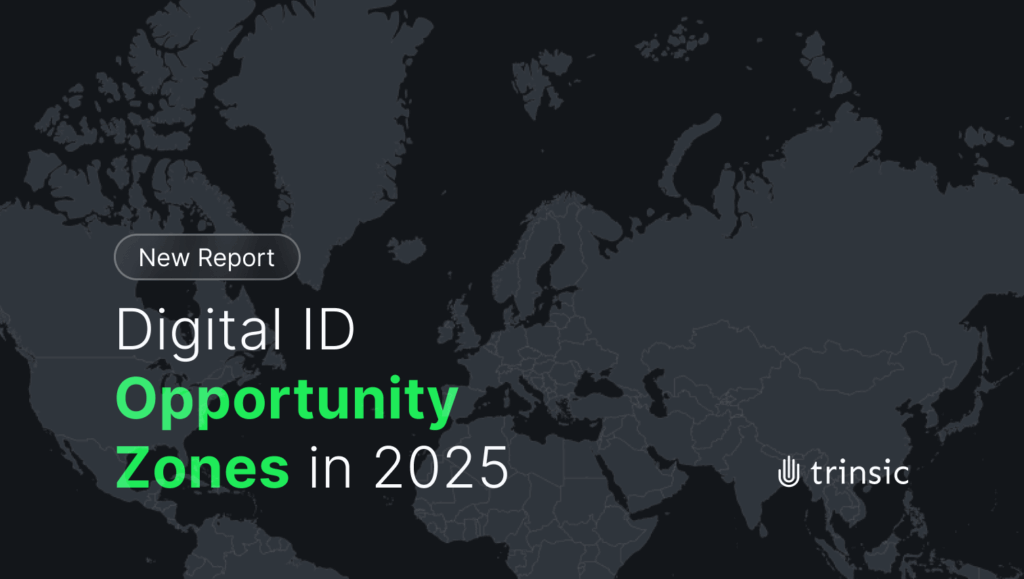The Pitiful State of Identity Today
Sometimes I marvel at how, despite sending people to space, editing genes, and getting dangerously close to AGI, humanity hasn’t built a way for me to prove my legal name is Riley Hughes online. Even to do so in real life, I need to pull a hopefully-not-forged plastic card out of a leather pouch in my pocket.
WHAT?! 🤔
Today’s digital identity companies ask users to photograph those plastic cards (and take a selfie) to authenticate their identity. Yet, we don’t photograph handwritten notes to communicate—we email. We don’t photograph checks to pay—we use Venmo or crypto. For all of our modern transactions, we use modern technologies and streamlined processes.
Our identity is the last thread tethering our lives to paper. It’s laughable, really, the way we’ve continued to use an archaic system for such an important and sensitive part of our lives.

What Does Identity Even Mean?
When I refer to identity in this context, I’m referring to everything that makes you, you. It’s not the same as “auth”—usernames, social logins, even public keys, are not your identity. And we’re not just referring to government IDs either. Our lives are so much richer and extend beyond our birthplace or address.
Real digital identity will allow us to represent our whole selves. It will enable us to illustrate and safely share our certifications, community memberships, licenses, preferences, and so much more.
The Catch-22 Problem of Digitally-Native Identity
So why hasn’t real, digitally-native identity been done? First we need to acknowledge the catch-22 problem that exists. Right now, a university won’t be motivated to issue digital diplomas unless there are companies accepting them. Companies however, won’t be motivated to create an ecosystem for accepting university diplomas until universities are issuing them.
The answer: we need a standard.
Historically, companies have tried to *be* the standard. The problem with companies *being* the standard is that it’s led to a graveyard of “one ID to rule them all” companies. The result is clear: No single company can own the world’s identity. Even if a company does succeed in a niche, they scarcely grow beyond that niche. Only a standard can solve this problem at scale.
The Role of Verifiable Credentials
This is where verifiable credentials (VCs) come into play. VCs are a W3C standard data container. Data inside a VC can be verified instantly and independently. That means someone could check that my diploma:
- was issued by my university,
- was issued to me,
- hasn’t been tampered with, and
- isn’t revoked
all without checking with the university. Of course, you’ll only trust the data in the credential as long as you trust the issuer. But this new standardized data container makes data portable for the first time.
Challenges of Decentralized Identity

What started as an effort toward interoperability ended up a mess of standards. Now, instead of solving business problems and building product, developers are being sucked into maintaining interoperability with an ever-changing, increasingly complex decentralized identity landscape. They’re forced to spend time and resources researching and detangling these complexities, instead of building their actual products.

But the worst part of proliferating standards is the impact it’s had on adoption. The value of a standard is an exponential function of its adoption. In other words, verifiable credentials only become valuable as adoption increases. And the catch-22 problem is hard enough to overcome—a splintered ecosystem doesn’t help anything!
So is decentralized identity doomed? Enter Trinsic.
Trinsic: Decentralized Identity Made Simpler
We created Trinsic as an infrastructure for building awesome identity products. Dozens of engineers use our SDK to build identity wallets or embed verifiable credentials into their products. Our SDK enables an Apple Pay-like UX for sharing and verifying data either online or in-person.
Our goal has been to completely abstract away the complexity of the ever-changing landscape so organizations can focus on the important stuff—what product to build, and how to take it to market. Teams shouldn’t have to “pick winners” and wager what to build on. Their products should be interoperable with multiple ecosystems. That’s what Trinsic is providing, out-of-the-box.
Our Story
So how did we get started? We came together in 2019 and built the first SaaS product for decentralized identity where developers didn’t have to run anything locally. We removed barriers to entry through a freemium product with usage-based pricing. We wanted to create a way for anyone to issue a verifiable credential in under five minutes, and we did.
As we ventured forward, we decided to build for the Sovrin ecosystem first; it was the most mature ecosystem at the time, and we knew the ecosystem well. It was a great starting point, and we quickly became a major player in that community. Last we checked, we power about 2/3 of Sovrin’s traffic, which equates to tens of thousands of transactions.
Today, we also support the W3C ecosystem, including JSON-LD and BBS+ credentials, as well as the Anoncred format from the Sovrin ecosystem. Furthermore, we support anchoring those credentials to Bitcoin (using ION), Veres1, and traditional web-based PKI. You can see all the details for each of these in our docs. In short, today we’re building the rails that power products that interact with this emerging ecosystem of verifiable, user-controlled data.
And where are we going next? Let’s talk about Visa, first. Below you can see the Visa business model:

Visa created a trust model that successfully brought over 1 billion people access to better payment transactions. And they proved the model could scale. Our plan is to take that trust model and apply it to identity. Of course, there are some key differences:
- First, instead of plastic credit cards, we use digital verifiable credentials.
- Secondly, instead of a centralized settlement network written in Cobol, we use decentralized PKI—usually on a blockchain, but we work with traditional DNS-based PKI too.
- Lastly, instead of controlling the entire ecosystem, we’re an open, API-first infrastructure anyone can build on.

Our approach to growth has been very product-led. It’s helped us remain highly scalable as community members help answer questions other developers pose, contribute to discussions on new products being built, and foster an environment where more developers want to join and explore building. We’re what Visa would have built if they wrote their software in 2020 instead of 1960—except for identity instead of payments.
The Future of Decentralized Identity
By removing the barriers to entry and providing an interoperability layer for developers, Trinsic is attempting to crack the adoption problem of decentralized identity. The best news: we’re seeing it work. We’re currently powering over 100,000 end-users’ identity wallets, up by about ~10x in just the last year.
Now, imagine for a moment you’re getting off the SpaceX craft on a Mars Colony. You need to prove your identity. Do you pull a plastic card out of your spacesuit? No. The future of identity will be much better than that.
That future is a digitally-native identity as legitimate and nuanced as your human identity. Call it decentralized identity, web5, self-sovereign identity, reusable identity, or whatever you’d like. But it’s happening. Now that we know it’s possible, it’s inevitable.










